How To Get A Tv Writing Job
Whether it is a multi-camera sitcom, single-camera sitcom, or one-hour drama, television scripts (sometimes referred to as teleplays) utilize different formatting compared to feature length movie scripts — for many different reasons. How can you differentiate what format you're supposed to be using for whatever type of television episode or pilot you are writing?
Television Series vs. Feature Film
Television shows and cinematic features tell stories in different ways.
With film, you're usually telling a self-contained story — barring any planned sequels, franchises, or multi-universe crossovers. You follow a general three-act story structure (beginning, middle, and end) told within the realm of varying format structures that you can utilize (non-linear, real-time, chronological, etc.). Regardless of how you tell your story, most features are self-contained and offer closure at the end.
With television, the platform of your stories — and the characters and worlds within — is expanded to multiple episodes and seasons where an audience stays tuned in for days, weeks, months, and years to find out the outcome of the story and character arcs.
TV Format vs. Movie Format
First and foremost, yes, the format behind television screenplays is different than writing that feature-length film, primarily because the television platform has different nuanced structure that must adhere to the inclusion of in-program advertising (commercials), as well as the shortened time lengths for television and streaming channel slots — thirty minutes to an hour, as opposed to a feature's ninety minutes and far beyond.
But don't worry, the difference between the two isn't as vast as you'd think.
Sluglines (location headings), scene description, character names, and dialogue are presented virtually the same between television and feature scripts. The differences lie within some of the general aesthetics of the format, as well as the way a story is structured. With television, because of that condensed time per TV or streaming channel slot (thirty minutes to an hour), a story's conflict is compacted to fit within that time slot.
Once you decide what you want to write, get your first draft out in 5 weeks with this guide.
The Software Is the Same
You don't need to buy television specific software. A majority of the industry screenwriting software will provide the proper templates for all forms of television episodes, as well as features obviously.
Whether it be Arc Studio Pro or one of the other equivalents, the software will do most of the work for you, from a formatting standpoint.
One-Hour Television Drama Structure and Format
Most one-hour series work within the realm of drama, thriller, science fiction, or fantasy genres. You generally won't find an hour-long comedy or sitcom. Yes, you can surely find comedy within any of these genres, but you'll never be writing an hour-long situational comedy.
Beyond our guidelines and expectations below, it's easy to understand the story structure of an hour-long episode by simply watching any hour-long show — depending somewhat on the platform that series is being shown on. You can get an easy feel for the general structure by watching any hour-long show on any of the network or cable channels. Shows like Mr. Robot , Americans , Empire , Better Call Saul , Grey's Anatomy , and The Walking Dead will offer you the perfect experience of network and cable channel structure. Each commercial break is usually a story act break.
Most hour-long television series episodes will consist of a Teaser scene, followed by Act One, Act Two, Act Three, Act Four, and then either a short Act Five or Tag. These teleplays will be anywhere from 53-60 pages in length, although that has trended upwards to 75 pages for more established writers.
Teaser
You open the script with a centered and underlined TEASER on the first page.
Teasers are just that — a tease that showcases what that episode's main conflict will be about and where the characters are at that point. They generally last for just a few pages, but there are many exceptions to that rule.
Here is the opening teaser heading from The Americans pilot episode:
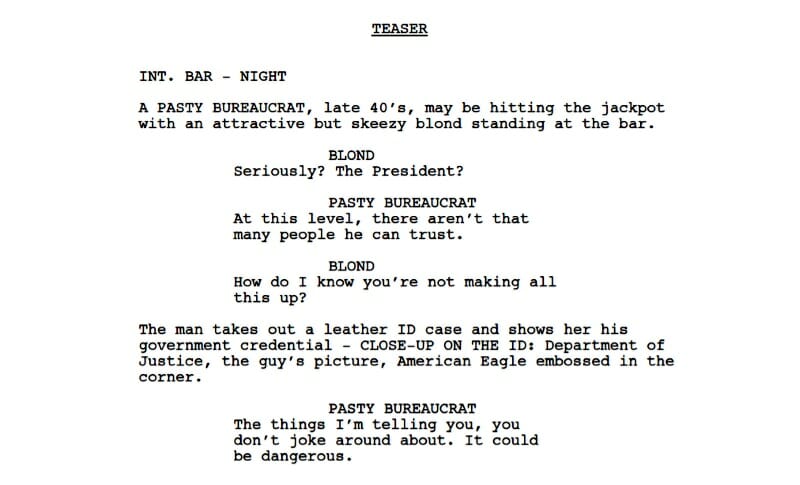
Now in this The Americans pilot script, the teaser goes on for 12 pages. This may be excusable for both established writers or for pilot episodes that are spending some extra time setting up the whole series to come, as far as general story, characters, and the overall world, but you usually want to keep most teasers to just a few pages for the most part.
As you can see, once you put that TEASER heading in the center, you write the script like you normally would within feature format, until you reach the end of that teaser scene/sequence where you will write END TEASER.
Download the pilot script for THE AMERICANS here for free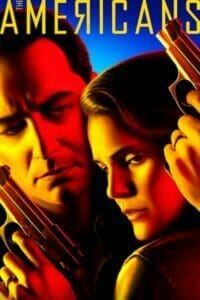
Act One
When the teaser scene is over, you must begin ACT ONE on a whole new page. As the script goes on, each act will begin and end as such. The purpose to start each act on a new page is to allow the reader to be able to easily differentiate where each act begins and ends.
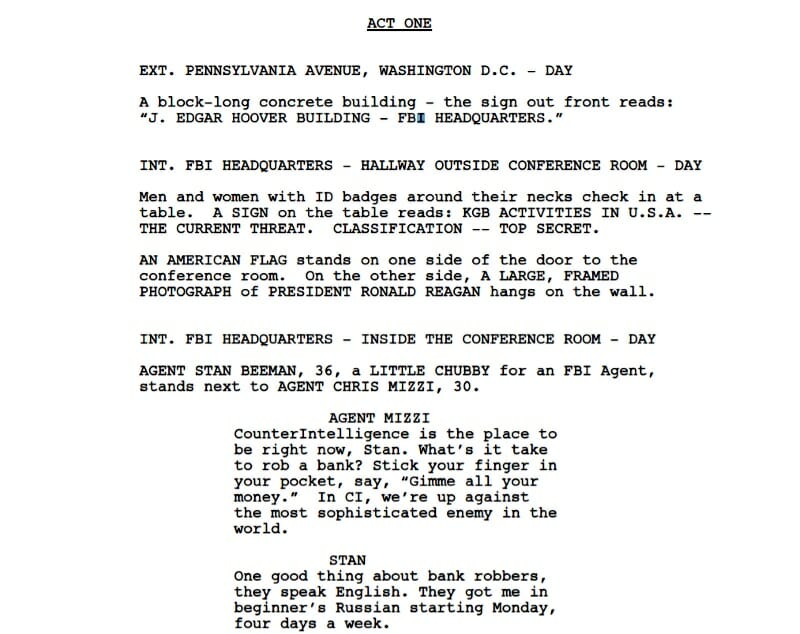
Act One usually goes on for generally 10-15 pages. The Americans pilot's Act One goes on for 13 pages overall.
The first act is often where the real story truly begins. You've already introduced the main conflict, struggle, or imposing threat at hand in the teaser — which is what the episode you're writing will center on — and now it's time to show where the main characters are as you lead them to being confronted with the main conflict (Act Two).
When ACT ONE is done, as you did with the TEASER, you need to close the first act with END OF ACT ONE underlined and centered.
Act Two
The second act, as is the case with the three-act structure of cinematic storytelling, is where the characters are dealing with the conflict. They're struggling or failing. They're discovering the worst effects of the conflict.
This act ranges between 14-15 pages, with some exceptions here and there. This pilot's second act goes on for an extended 18 pages.
And by the end of the second act, they've possibly found a way to overcome it, until…
Act Three
The third act is often when the characters are at their lowest point. The second act may have offered some general hope, but the third act has crushed those hopes as a new or evolved conflict has confronted them. They've failed or are overcome.
This act also ranges in between 14-15 pages for most teleplays. The third act of The Americans goes on for an extended 17 pages.
Act Four
The fourth act begins to thankfully show the main characters starting to solve the problem or face the conflict with renewed knowledge, strength, or resolve.
Most shows end in the fourth act. The characters have survived or have learned something from what they've faced. But the episode isn't usually done there. This is a multi-episode series consisting of continual story arcs and character arcs, right? The fourth act will usually end on some cliffhanger or tease for the next episode. It can be simply written as the final scene or moment within the fourth act, or…
Act Five or Tag
If you want to further accentuate that cliffhanger or tease for the next episode, you can utilize ACT FIVE or TAG (better option is the latter).
The fifth act or tag consists of just 1-2 pages for the most part.
The Americans pilot script utilized the end of the fourth act for their cliffhanger, but this could have just as easily been used as a TAG.
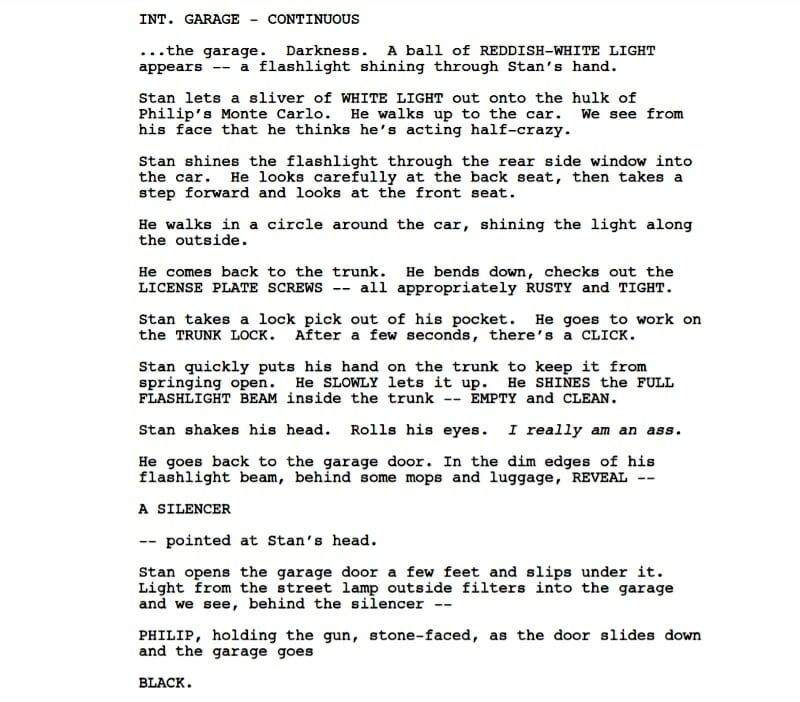
As you can see, we're left with a cliffhanger of sorts. Not every script needs to do this, but it's a clear way to make the audience want more.
One-Hour Television Script Summary
As you can see, the format for a one-hour series episode is fairly easy and straightforward. The only additions to the screenplay format you're used to with writing film scripts are the centered and underlined TEASER, END TEASER, ACT ONE, END ACT ONE, ACT TWO, END ACT TWO, ACT THREE, END ACT THREE, ACT FOUR, END ACT FOUR, and then ACT FIVE or TAG (if applicable). You can then close up the episode script with a centered and underlined END OF SHOW, END OF EPISODE, or just THE END.
The real elements to pay attention to are the page counts for each of those teasers, acts, and possible tags. You have to fit the show within the allotted time slots. If it's an hour-long show, you can't write a 90-page script. The Americans pilot was a clear exception to the page count rule due primarily to an extended teaser. If you go over the suggested page counts for each act by a couple of pages, no harm or foul. This is often due to scene description or more visual sequences that need to be explained, and sometimes it is also due to extended dialogue that takes up additional script real estate. And yes, you'll notice that we specifically mentioned earlier that this is the general format for network and cable channels shows — those dealing with commercial breaks and such. We'll talk a little bit about exceptions to the formatting rules and guidelines later on.
But overall, these guidelines will offer you an easy way to craft that one-hour television script.
Half-Hour Sitcom Structure and Format
Most half-hour shows are sitcoms. However, especially with the expanded platform of streaming channels, that line between comedy and drama within half-hour shows is beginning to blur. YouTube Red's Cobra Kai — the brilliant follow-up to the cinematic Karate Kid franchise — showcases more of a dramatic tone with some clear comedic nuances.
Regardless, a majority of half-hour shows are comedic.
And within that half-hour, situational comedy realm are two different types of shows — single-camera and multi-camera.
Single-Camera vs. Multi-Camera Sitcoms
The single-camera sitcom encompasses shows like Modern Family , Silicon Valley , The Last Man on Earth , and Life in Pieces .
The single-camera label is a misnomer, mind you. Such shows often use more than one camera. The important element to remember when trying to decipher what a single-camera show is can be found in the way that the show is shot. These types of shows are filmed much like a film, as opposed to episodes filmed in front of a live studio audience.
The multi-camera sitcom often entails shows that do shoot in front of a live studio audience — The Big Bang Theory , Friends , and Roseanne as prime examples. These comedies are shot in a live stage, using multiple cameras to capture the performances often spread out between different portions of a set. Characters move from room to room and different cameras follow them. Even in single locations, multiple cameras catch different angles during live recordings.
Single-camera sitcoms are also written slightly different, as they don't rely as heavily on single jokes to get a live audience reaction, as is the case with multi-camera shows shot in front of a live audience.
Single-Camera Format
The single-camera show is written much more like a feature script or one-hour drama. You can take what you've learned above from one-hour television scripts and apply it to single-camera scripts with the added notion of having to condense the acts due to the reduced page count of 22-25 (give or take a couple). For established writers and showrunners, some television script can push 40-some pages, often due to the dialogue. But as a spec writer, you should keep within the 22-25 sweet spot.
Sitcom scripts follow a more standard beginning, middle, and end structure — Three Act Structure — and in this case, the teaser is more commonly referred to now as the COLD OPEN.
Cold Open
Like the teaser of an hour-long drama, the cold open introduces the conflict at hand — or in this case, the "situation" of the situational comedy. Now, this doesn't always have to be central to the story of the whole episode. Friends was famous for unrelated cold openings that just offered some funny character moments and laughs that often had little or nothing to do with the story. But, they always showcased the dynamic of the characters, which for a sitcom is just as important.
With The Last Man on Earth , the cold open introduced us to the premise of the show, which is standard for pilot episodes. As the episodes went on, the cold openings would vary from plot-oriented to character-oriented.

As always, COLD OPEN is centered and underlined and always ends with END COLD OPEN. And yes, you can surely use TEASER and END TEASER as well.
Act One
The first act of a sitcom script quickly throws the characters into the conflict or situation and usually goes on for 9-10 pages or so. As always, ACT ONE is always centered and underlined, and always begins on a new page, as does ACT TWO and ACT THREE.
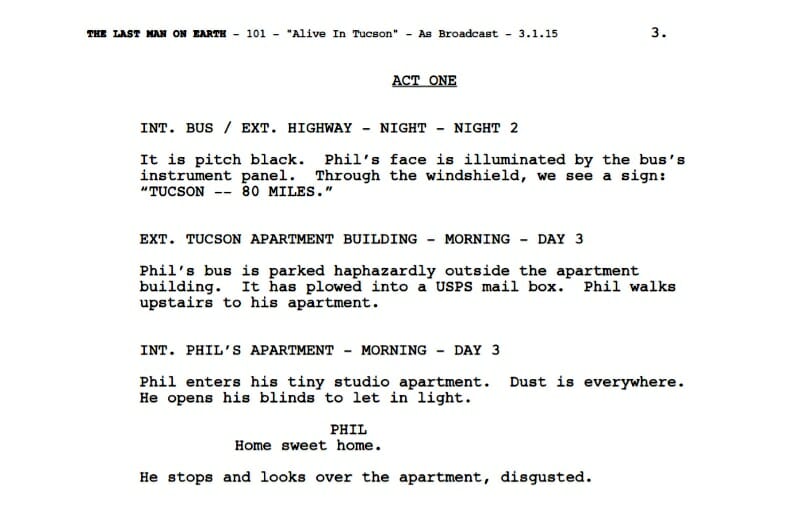
Act Two
Just as is the case with the one-hour drama script, the second act shows the characters at their worst. In the case of the sitcom, hilarity ensues amidst the characters dealing with the situation they've been forced to go up against. For the audience, the laughs are at their pinnacle. For the characters, they are struggling their most.
If we were watching an episode of The Goldbergs , this act would end with the mother walking off disappointed in her children, and her children feeling down in the dumps as a result of that.
Act Three
The third and final act is the resolution. It is where the characters begin to figure things out and try to survive the situation or move past it. It would be the children in The Goldbergs making up for the wrong they did.
Tag
Many sitcoms have tags that are very similar to the cold open, as far as showcasing a gag or character trait (if it's not directly plot-related). The TAG in a sitcom is a simple moment, no longer than a page, that offers an additional laugh, very often as a second closing point to the overall plot or subject.
Click Here to read The Last Man on Earth pilot script!
Multi-Camera Format
Multi-camera scripts are the most different, format-wise, compared to all other television scripts which utilize the same basic format overall.
Because most multi-camera sitcom scripts are shot in front of a live studio audience, the format is different, primarily for production purposes. These types of shows are produced much faster, with most shooting more than one episode per day in front of a single audience.
Because of this, multi-camera episodes require a more technical and streamlined format for specific production productivity.
Differences include:
- The action and scene description are in CAPS.
- CHARACTER NAMES are underlined the first time that they appear and are often in CAPS throughout the whole script.
- There are more stage directions, much like you'd see in a stage play.
- Character entrances and exits are often underlined.
- Scene headings/slug lines are usually underlined.
- Dialogue is double-spaced.
That last difference is a perfect example of why you want to use industry software templates specific to those types of shows. Because of that double-spaced dialogue, multi-camera scripts are often 52-58 pages, as opposed to single-camera script count goals of 22-25 pages.
Half-Hour Sitcom Summary
The single-camera sitcom script is just a condensed version of the hour-long drama, format-wise. It is the multi-camera sitcom script that really challenges the general knowledge of a screenwriter when it comes to the different and very technical format utilized.
Do You Dictate What Is a Single-Camera or Multi-Camera Show?
More often than not, you don't — or can't. The multi-camera script is very technical and specific, but can be written in the more standard format of a single-camera sitcom script as the writer writes on spec.
In the end, it's up to you if you want to showcase your knowledge of the multi-camera format.
One could argue that using the more simple format will offer readers an easier read though, because at the spec stage, the technical aspects of the multi-camera script don't come into play. You're just writing to be read and considered — you don't need to be production ready.
The Exceptions to All of These "Rules"
As with any examples of format rules, there are certainly exceptions.
You will see pilot scripts for major shows that read no different than feature-length movie formats. This happens more so with streaming or premium channels (HBO, Amazon Prime, Netflix, etc.), due to the fact that commercial breaks are not an issue.
Games of Thrones and The Walking Dead pilots are prime examples (click on the titles to read the pilot scripts). They both utilize standard feature format with no act breaks.
So what does that mean for newcomers?
It's your choice. It's handy to know, understand, and have the ability to utilize this format knowledge, but mostly in the cases of hour-long dramas that are shot more cinematically, writers do have the option of going the more standard route.
Sitcoms are a different beast, however. They need to fit more into a compressed time slot while still embracing a general television format structure — thus the format featured above should be followed. The overly technical multi-camera format can certainly be ignored when you're writing on spec, since the content is what really matters.
And Finally… What to Expect with TV Writing Aspirations
Very few original spec pilots are actually purchased for production. Most are used as samples for possible writing assignment jobs. And screenwriters need to know that getting a job writing for a television show means that you have to live in the Los Angeles area. There are a handful of writer's rooms that are based in New York as well.
If you want to write for television, you have to live where the writer's room is. There is no getting around that. Sure, there are likely some examples of screenwriters that sell a pilot on spec, take the money, and run, but few and very far between.
However, television writing jobs are truly one of the most coveted and most beneficial career moves a screenwriter can make. Now that you know how to format them, go write some amazing episodes.
Ken Miyamoto has worked in the film industry for nearly two decades, most notably as a studio liaison for Sony Studios and then as a script reader and story analyst for Sony Pictures. Make sure to read his growing archive of posts at ScreenCraft for more inspiration.
He has many studio meetings under his belt as a produced screenwriter, meeting with the likes of Sony, Dreamworks, Universal, Disney, Warner Brothers, as well as many production and management companies. He has had a previous development deal with Lionsgate, as well as multiple writing assignments, including the produced miniseriesBlackout, starring Anne Heche, Sean Patrick Flanery, Billy Zane, James Brolin, Haylie Duff, Brian Bloom, Eric La Salle, and Bruce Boxleitner. Follow Ken on Twitter @KenMovies
For all the latest from The Script Lab, be sure to follow us on Twitter, Facebook, and Instagram.
How To Get A Tv Writing Job
Source: https://thescriptlab.com/features/screenwriting-101/8930-how-to-structure-and-format-your-television-scripts/
Posted by: wommackcomplat.blogspot.com

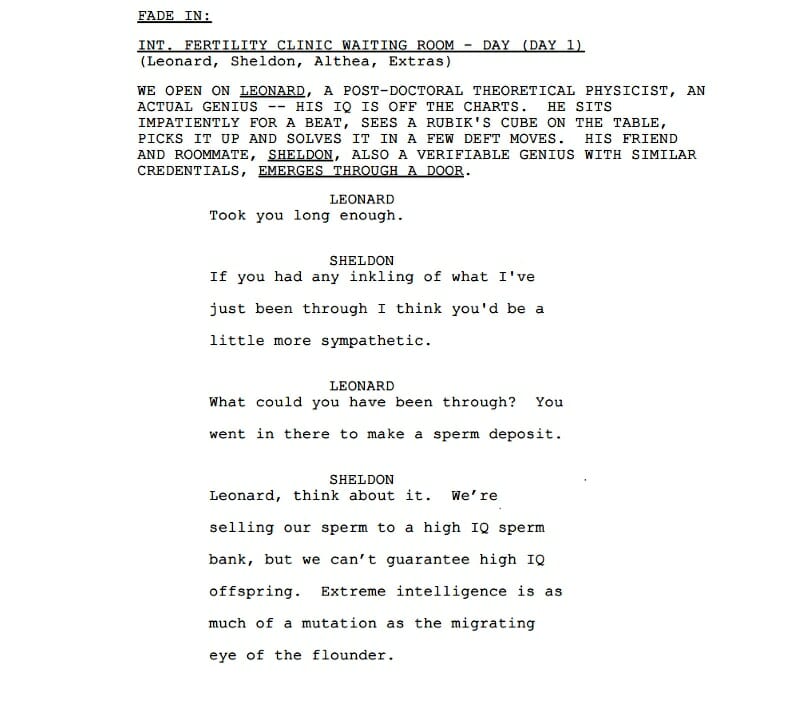
0 Response to "How To Get A Tv Writing Job"
Post a Comment